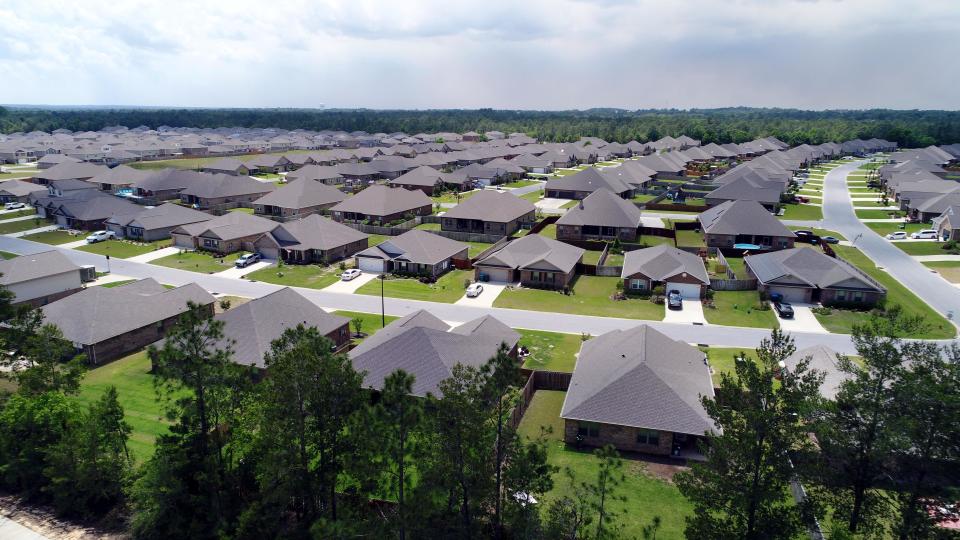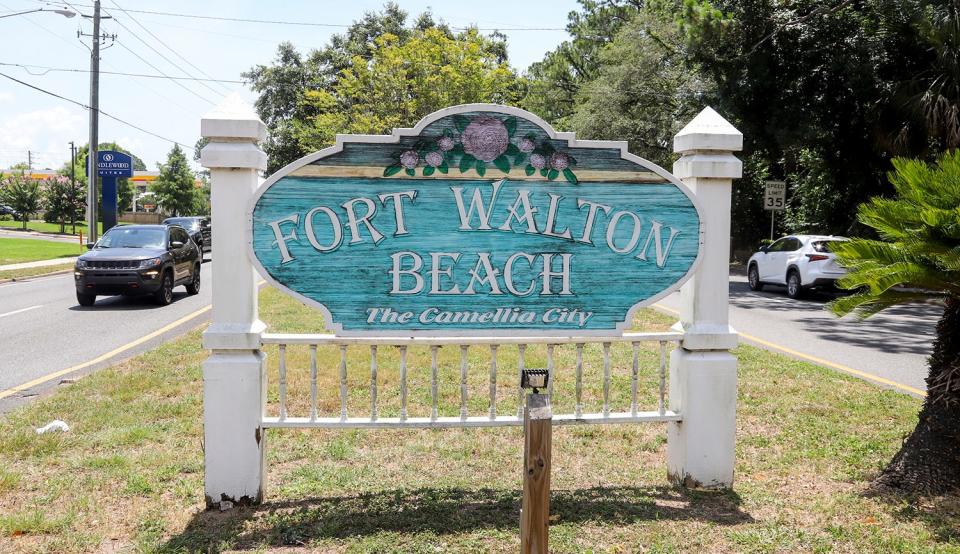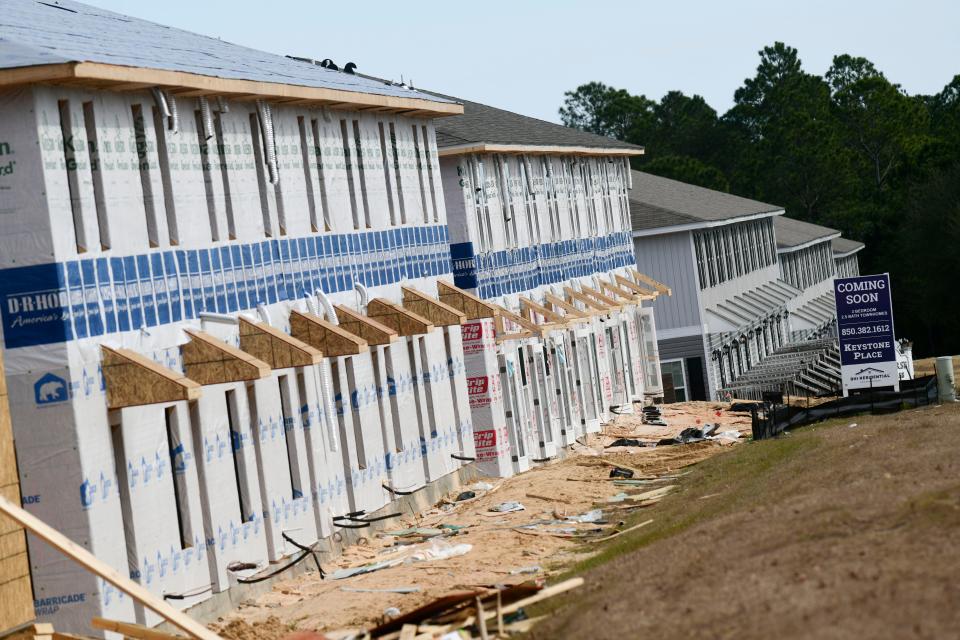Which NWFL municipality pays the most in taxes, fees? Mary Esther report compares them
Among Okaloosa County’s nine municipalities, the city of Crestview charges the most in residential property taxes. But when water, sewer, stormwater and trash service fees are included, a Mary Esther homeowner ends up paying a higher annual “cost of public service,” according to a city of Mary Esther report.
Local municipalities are in the midst of their respective budget seasons, in which staff and elected officials determine the budget and millage rate for their city or town for fiscal 2023. The new budget year starts Oct. 1.

Home prices soar: Costs of homes in Okaloosa and Walton soar while supply, square footage falls short
Affordable housing in NWFL: Crestview partners with Gregg Chapel A.M.E. on affordable housing project near downtown
On July 5, the Mary Esther City Council is set to review a staff report that compares various fiscal 2022 taxes and fees levied on residential properties in the county’s municipalities.
The report includes a chart that shows the annual property tax bill for a residential property with an assessed value of $250,000.
Using that value, the chart shows how much a residential property owner in each municipality was charged this year in city, county and school taxes, as well as for water service from the Northwest Florida Water Management District and any independent fire district taxes. (Water and other utility rates charged by the county and the municipalities, as well as Fort Walton Beach’s fire fee, are listed in a separate table.)
“The city of Crestview would have the highest property tax bill at $4,187.45 and Destin would have the lowest at $3,104.55,” Mary Esther officials said in the report. “Mary Esther is near the median at $3,707.33, $75.80 less than Fort Walton Beach and $0.53 higher than Valparaiso.”
The report also lists current residential property tax rates charged by each municipality: Crestview’s is 6.94 mills, Cinco Bayou’s is 3, Fort Walton Beach’s is 5.32, Mary Esther’s and Valparaiso’s are a little more than 5, Shalimar’s is 1.8, Niceville’s is 3.7, Laurel Hill’s is 3.5 and Destin’s is 1.61.
One mill equals $1 for every $1,000 of taxable property value.

Okaloosa County’s current county-wide millage rate is 3.83, according to county budget information.
Crestview’s current millage rate equates to $694 per $100,000 of taxable property value, while Mary Esther’s is equal to a little more than $500 per $100,000 of taxable value.
Another chart and table in the comparison report uses the current property tax bill, utility bill and other fees to develop an annual “cost of public services” for a home with an assessed real estate valuation of $250,000 and water usage of 5,000 gallons per month.
That data shows that Mary Esther currently charges a little more $1,400 per year for utilities while Crestview charges almost $834 annually.
So, the owner of a $250,000 home in Mary Esther would pay a total annual cost of public service of more than $5,107 this year while a Crestview resident whose home has the same assessed value would pay a little more than $5,021.
Because of its low property tax rate, Destin’s total annual cost of public services totals about $4,240, which besides being lower than Mary Esther and Crestview is less than the total in Fort Walton Beach, Valparaiso, Shalimar and Niceville.
Laurel Hill does not provide sewer services and was excluded from that part of the report. The town of Cinco Bayou was excluded because it did not provide information on all utilities, according to Mary Esther officials.
In late 2019, the Mary Esther City Council approved potentially borrowing up to $30 million to pay for a citywide water and sewer infrastructure rehabilitation project that was estimated to be completed in about 15 years. City Manager Jared Cobb has said that the council adopted a plan drawing on loans or a line of credit to complete the work, but that a final monetary amount won’t be known until all the work is finished.
The council also in late 2019 approved a higher city millage rate and higher water and wastewater fees to help pay for the resulting debt.
Mary Esther’s residential property tax rate of almost 5.03 has remained unchanged since 2019.
“Staff will approach future budget years with the assumption of maintaining the current tax rate,” city officials said in the tax and fee comparison report.

Information on possible changes to Mary Esther’s fiscal 2023 utility rates was not immediately available.
Crestview is the largest and most-populous city in the county and, unlike cities in the south end, has plenty of room to grow.
However, “While Crestview is the largest city in the county, it also has some of the poorest properties in the county,” Crestview City Manager Tim Bolduc said Tuesday. “We have a large number of houses whose owners pay little or no millage because of very low property values."
That concern factors into why the city has been “hyper-focused on smart growth” in recent years, Bolduc said.
“The more properties we can bring in (via new subdivisions and annexations), the lower the cost of the tax burden,” he said.
He also said that for the most part, it still costs less to buy a house in Crestview than one in Fort Walton Beach.
“If the assessed value is half as much” in Crestview compared to Fort Walton Beach, “the millage has to make up for it,” Bolduc said.
Just like all other cities, Crestview is struggling with inflation, higher fuel costs and other rising expenses, said Bolduc, who plans to recommend the City Council retain the city’s current millage rate for fiscal 2023.
He said Crestview’s utility rates are set to increase in the new budget year, but that their accumulated total will remain the lowest among the county’s municipalities.
This article originally appeared on Northwest Florida Daily News: Mary Esther report compares NWFL millage rates, utility rates and more

